
|
About Contribute Source |
| main/mps/algorithms/denmat_mpo_mps/ |
MPO-MPS Multiplication: Density Matrix Algorithm
One way to multiply a matrix product state (MPS) (or tensor train) tensor network by a matrix product operator (MPO) is to use the product of these two networks as input to the density matrix MPS compression algorithm.
The page will describe the algorithm in detail, but it may be helpful to first review the simpler case of the algorithm that only involves compressing an MPS to a smaller MPS.
Statement of the Problem
Given an MPS of bond dimension $M$ and an MPO of bond dimension $k$, we wish to represent their product as another MPS of bond dimension $m$. That is, we wish to find the MPS on the right-hand side of the following equation:

such that the Euclidean distance between the two sides of the equation are minimized subject to the constraint on the dimensions of the constituent tensors.
Steps of the Algorithm
The algorithm uses the fact that the MPS representation of a large tensor can be computed by singular value decompositions of the tensor over bipartitions of its indices. Just as the singular value of a matrix $M$ can be computed by diagonalizing $M^\dagger M$ and $M M^\dagger$, so an MPS can be computed by squaring a tensor over different subsets of its indices. These squarings of the tensor we wish to compress are the density matrices, and the tensor we are compressing is the product of the MPS times the MPO.
To begin the algorithm, one computes the following square or partial trace of the MPO-MPS product:

Note that the the MPO-MPS product in the lower part of the diagram is the Hermitian conjugate of the original MPO-MPS product we want to compute.
To make it easier to visualize the contractions in the diagram above, it is helpful to redraw the network to be computed as follows:
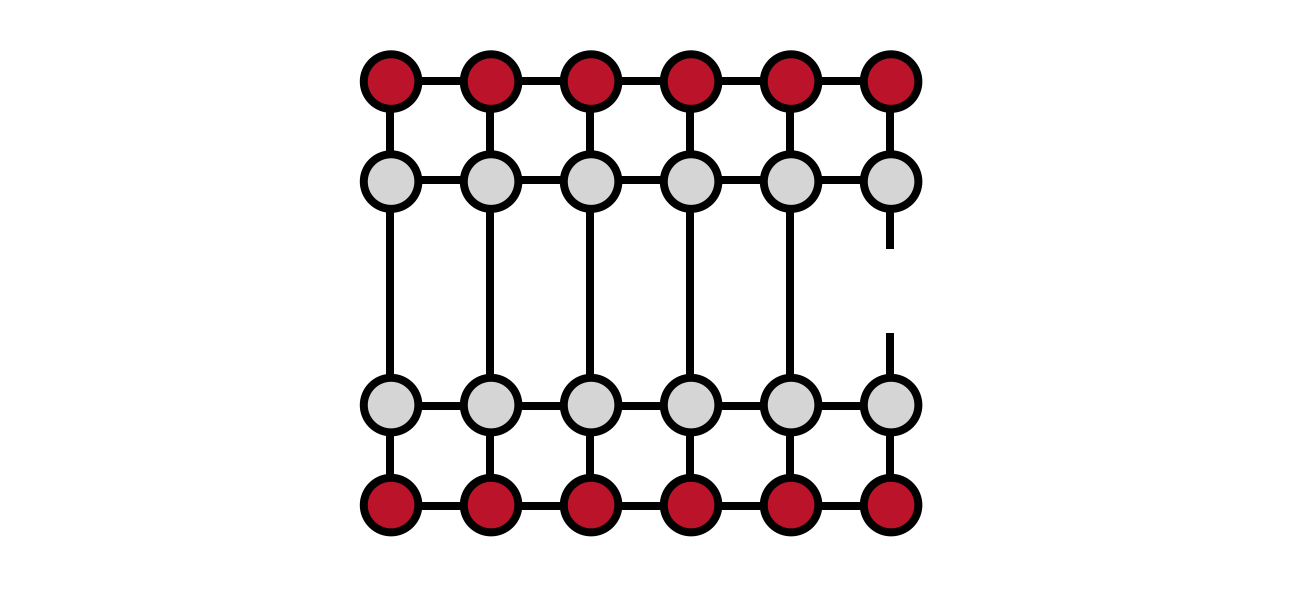
Now, one begins computing the network from the left, saving the ‘overlap’ tensors $L_j$ indicated in the figure below to be used in later steps of the algorithm:
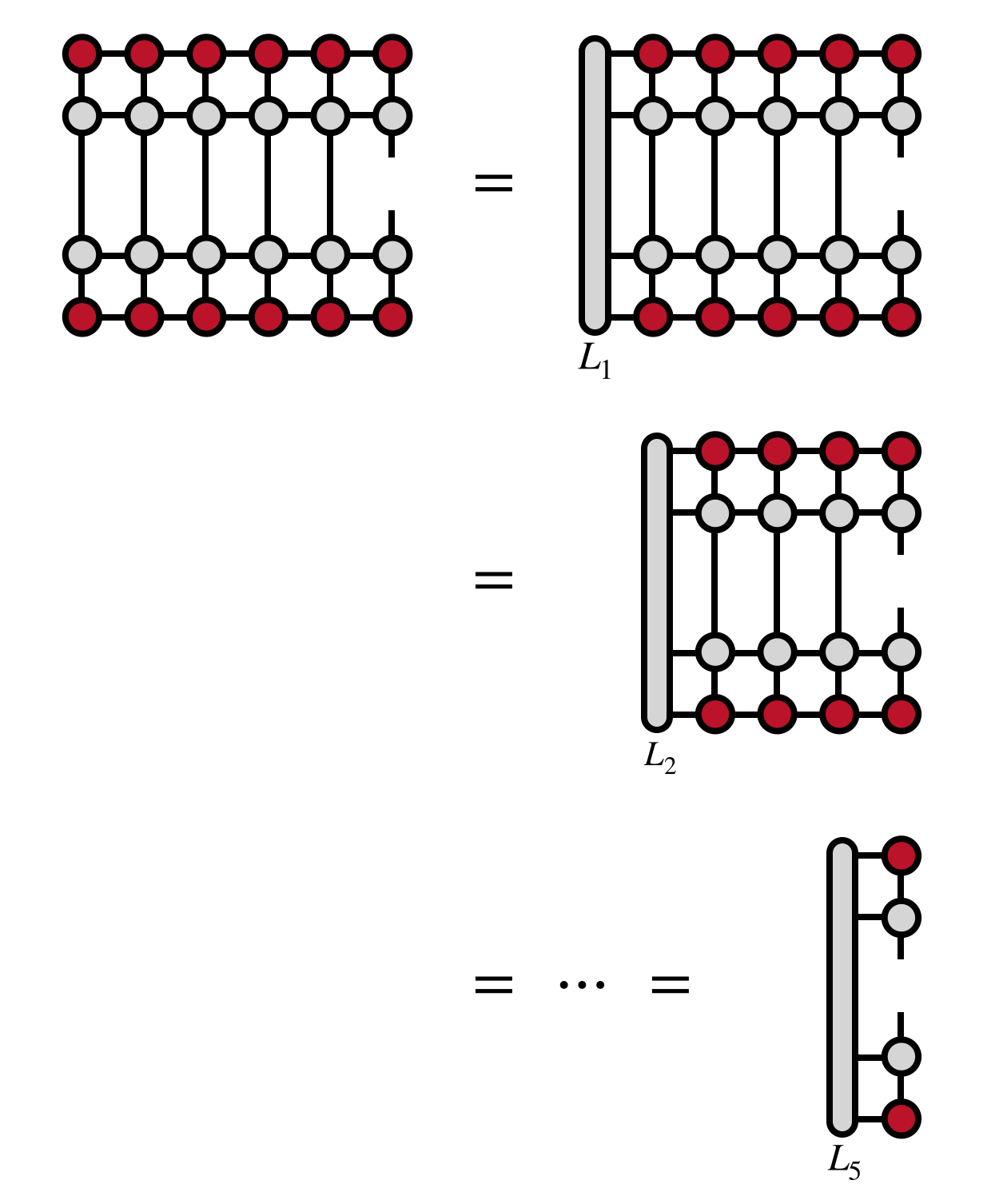
To compute these overlap tensors efficiently, one contracts the previous $L_j$ with the next MPS and MPO tensors, and their Hermitian conjugates one at a time (not shown). The optimal sequence of contraction can depend on whether the MPS bond dimension is bigger than the MPO bond dimension or not.
Having computed the partial overlap tensors $L_j$, one can now compute the reduced density matrix for the last visible index:
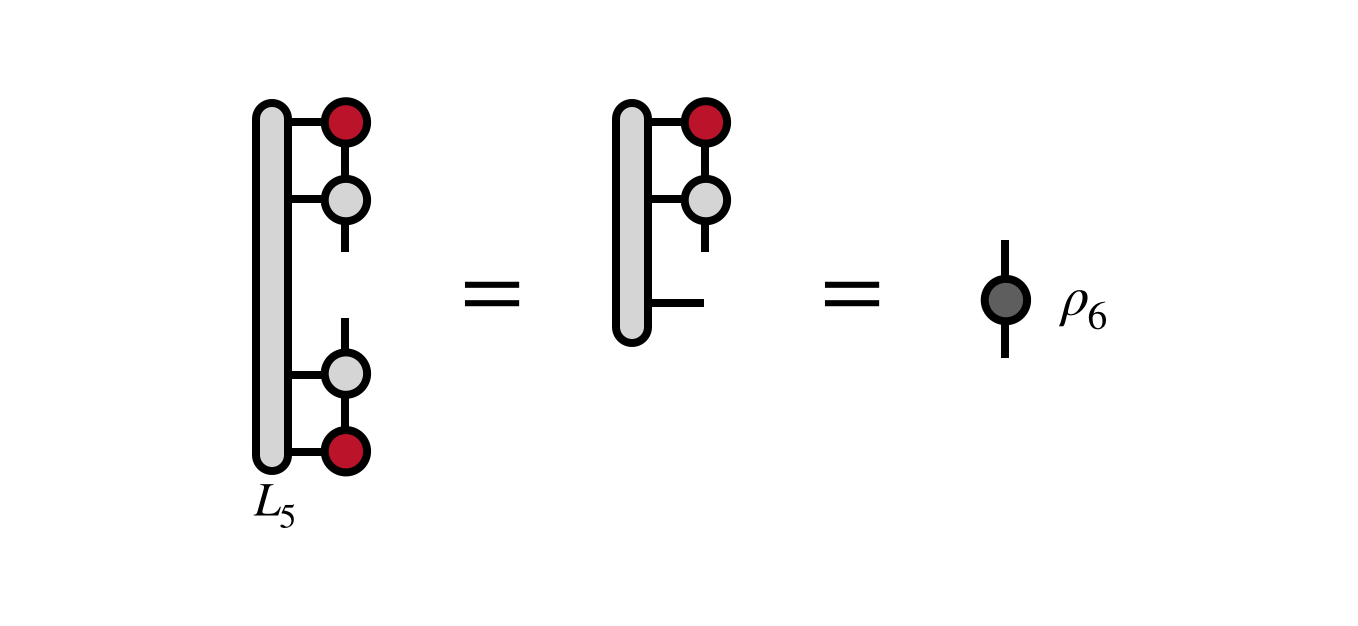
The unitary $U_6$ which diagonalizes this (Hermitian) matrix is the first tensor of the new MPS we seek:
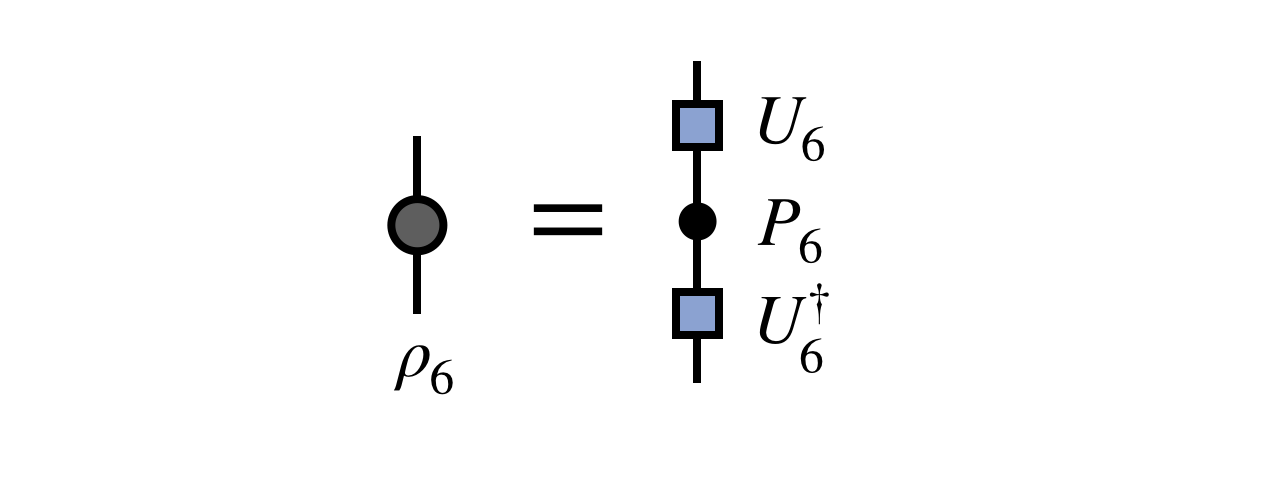
To control the size of the new MPS, one truncates all but the $m$ largest eigenvalues of $\rho_6$, truncating the corresponding columns of $U_6$ as well.
Next, one uses a previous $L_j$ tensor to “uncover” the density matrix for the last two visible indices, while at the same time applying the previous $U$ tensor to transform the basis of this density matrix. The transformation by the $U$ tensors is necessary to keep the cost of the algorithm under control and to ensure that each new MPS tensor produced has compatible indices with the previous one.
Diagonalizing the density matrix $\rho_{56}$ and truncating the smallest eigenvalues gives the next MPS tensor $U_5$:
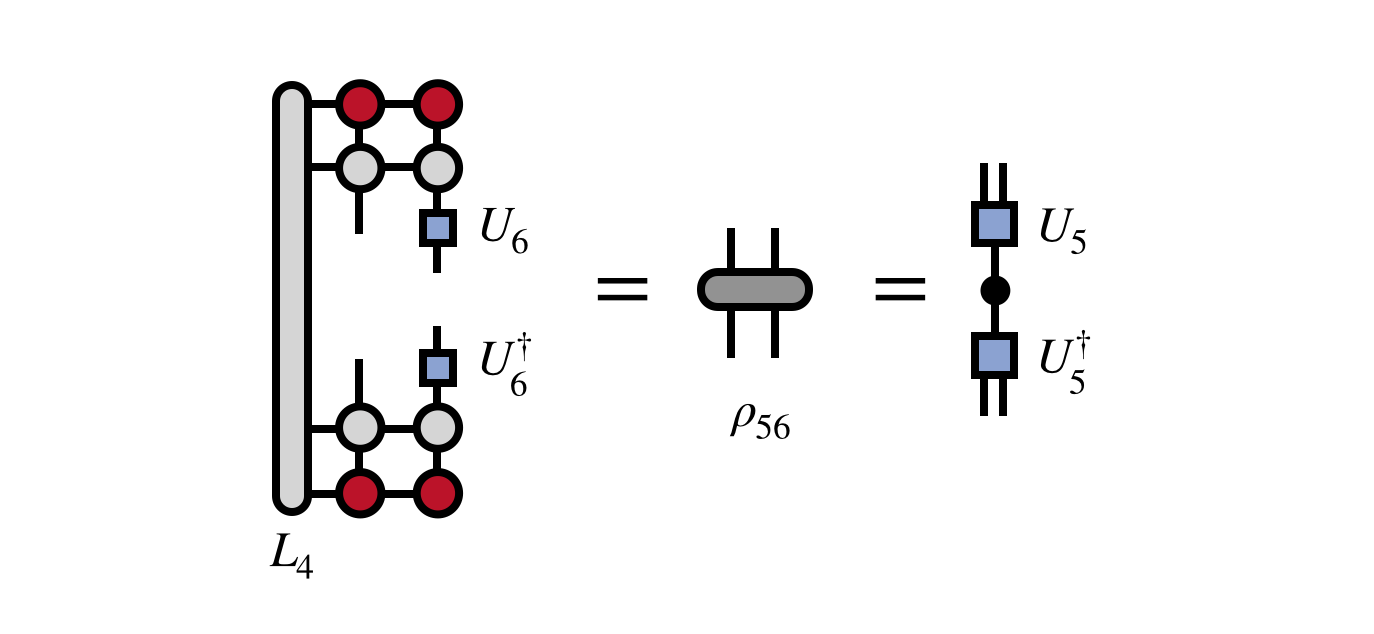
For efficiency, note that the part of the above diagram nearby to $U_6$ is identical in the upper and lower part of the diagram, except for a Hermitian conjugation of the tensors. So one can begin to save this part of the diagram so as not to compute it more than once:

Having obtained $U_5$ above, one applies it to transform the basis and uncovers another external index of the MPO-MPS product, reusing the saved $L_3$ tensor to obtain the density matrix $\rho_{456}$. Diagonalizing this density matrix (with truncation) gives the next MPS tensor $U_4$:

Continuing with steps similar to the ones above, one can continue to obtain the tensors $U_3$, $U_2$, etc. which diagonalize the reduced density matrices obtained by exposing each previous external index. For example, the steps to obtain $U_3$ are:
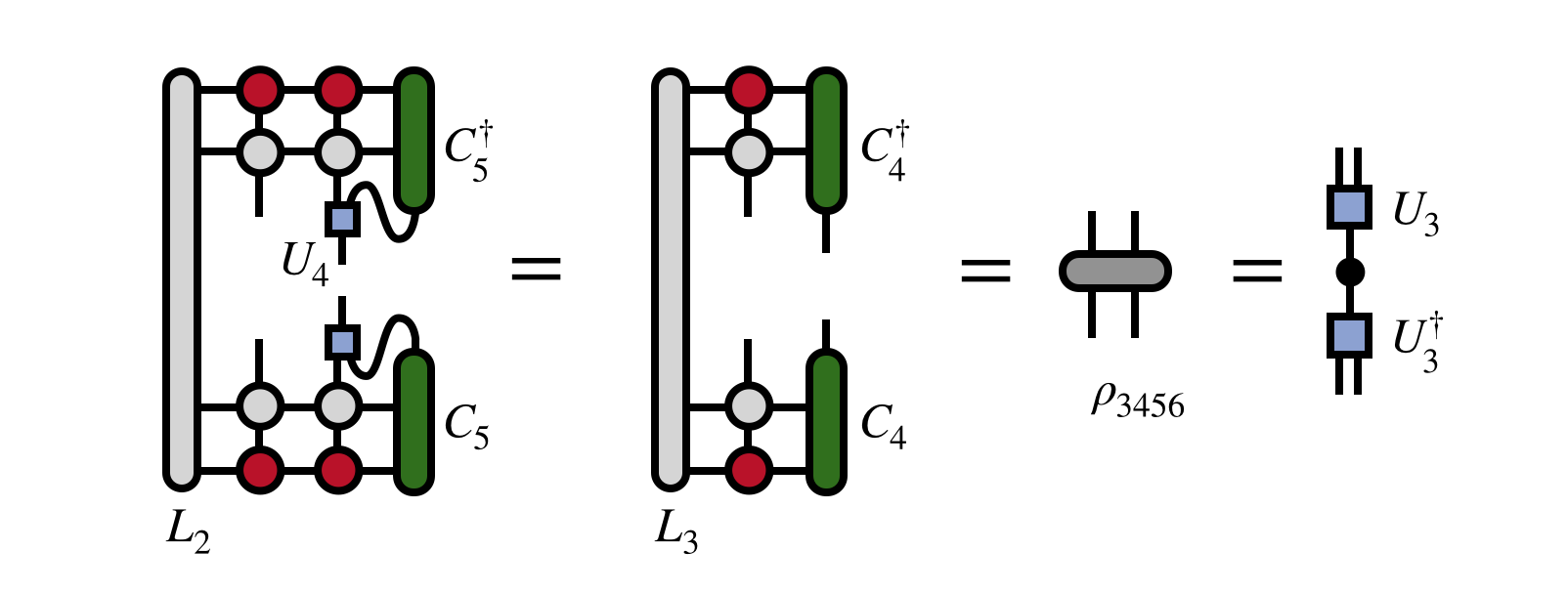
Finally, once all of the tensors down to $U_2$ have been obtained, the MPS tensor $M_1$ carrying the first external index can be computed as:

Having obtained this tensor, the final MPS which represents the MPO-MPS product we seek is:

As a bonus, the resulting MPS has the property of being in the right orthogonal gauge.
Implementations in Code
- This algorithm is implemented in the C++ version of the ITensor Library through the applyMPO(MPO,MPS,{“Method=”,“DensityMatrix”}) function and in the Julia version of ITensor through the contract(::MPO,::MPS;method=“densitymatrix”) function. The implementation source code can be found at these links: C++ implementation and Julia implementation
Acknowledgements
The idea for the algorithm came from discussions with Glen Evenbly, Steven R. White, and Ian McCulloch.
Edit This Page